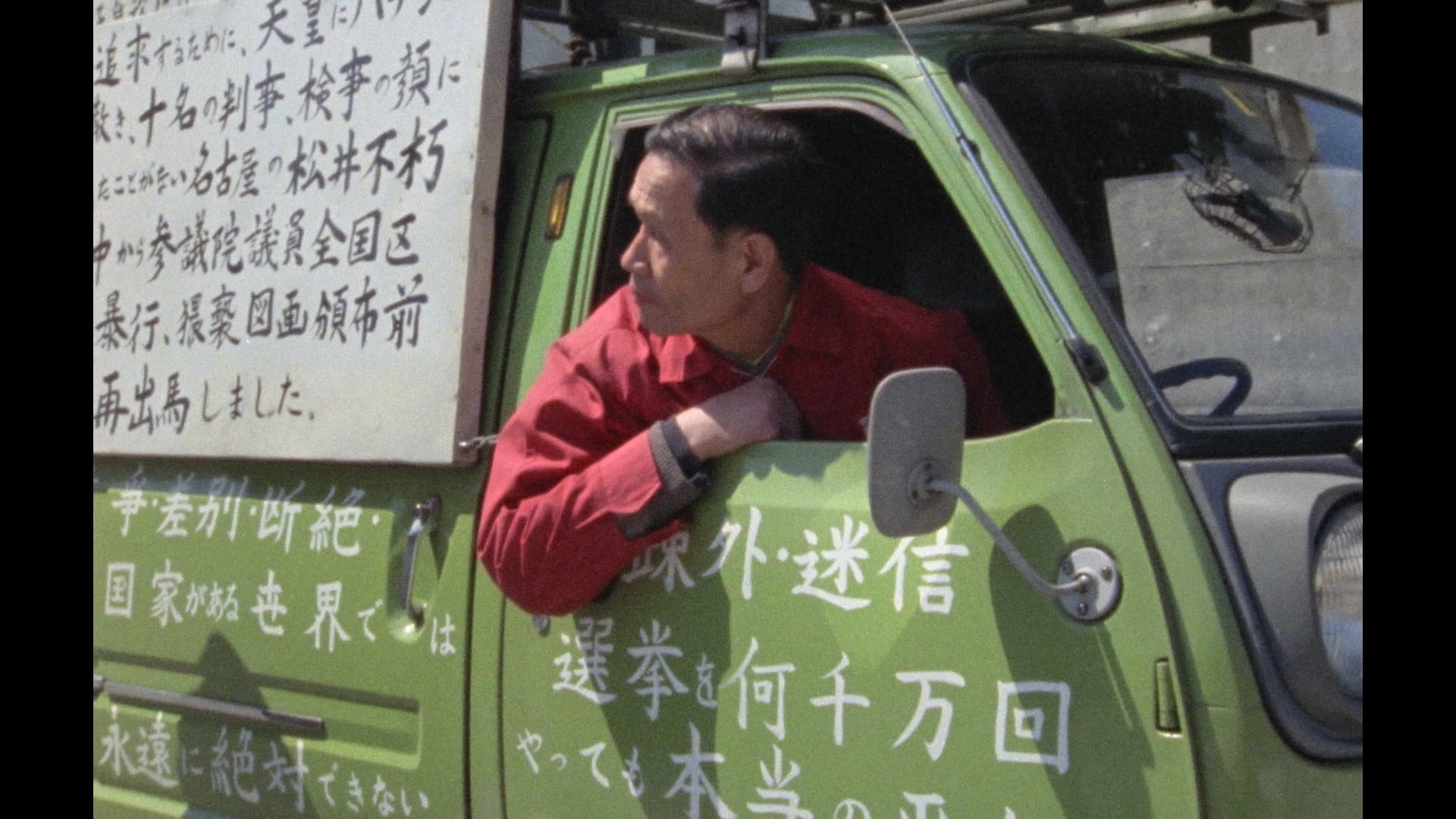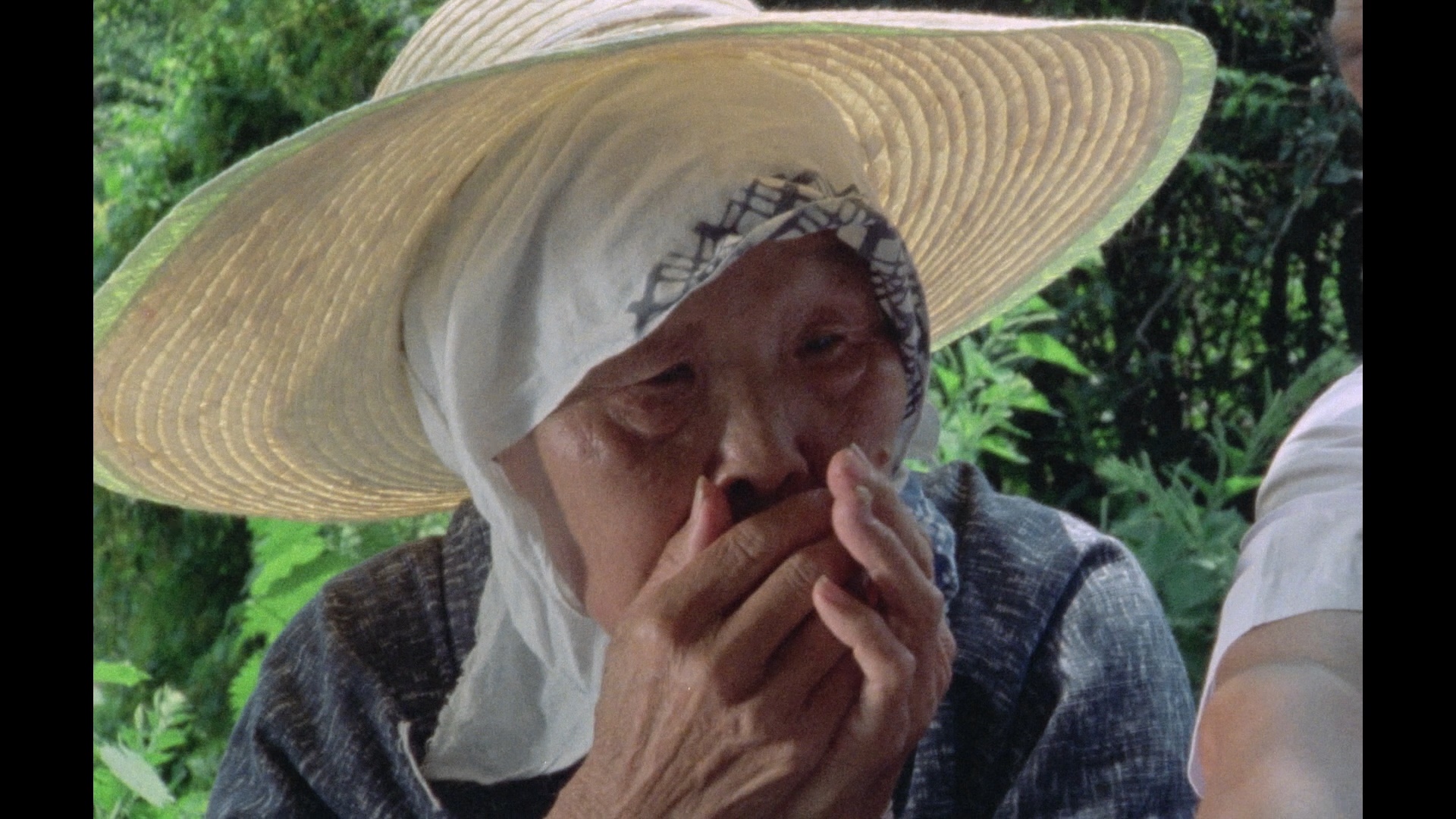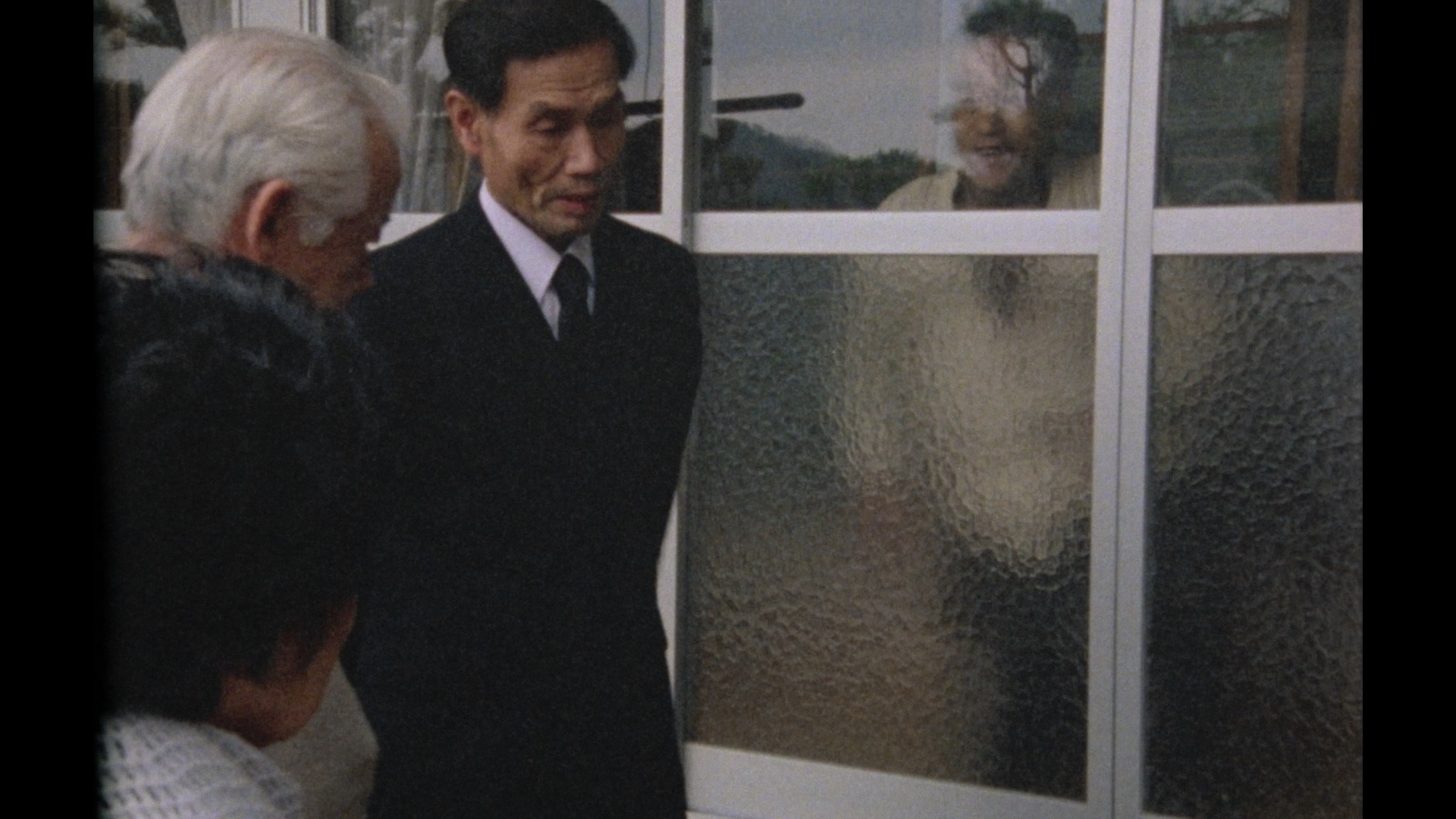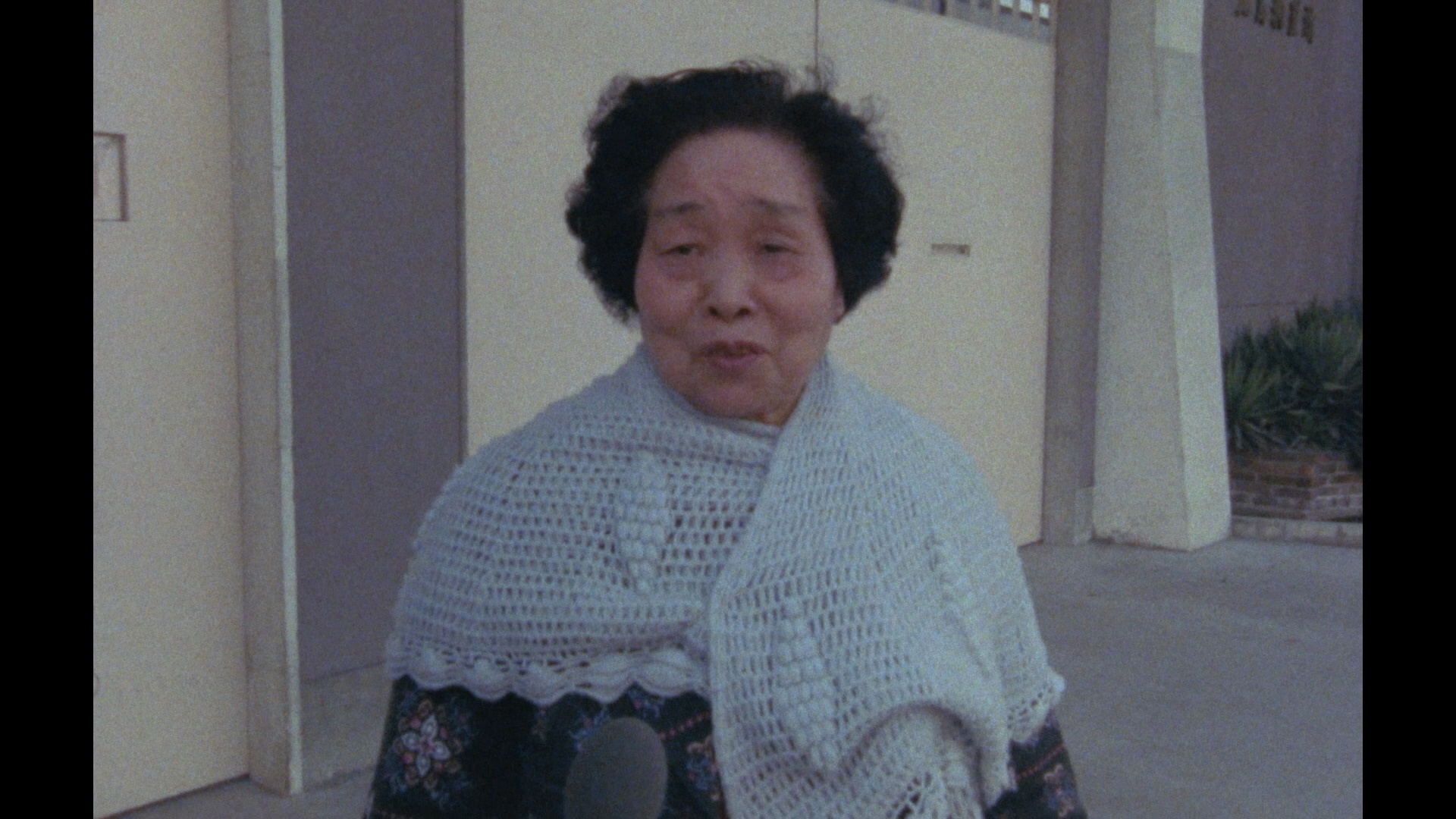
Color, 1987, 120 mins. 55 secs.
Directed by Hazuo Hara
Second Run (Blu-ray & DVD) (UK R0 HD/PAL) / WS (1.55:1) (16:9), Facets (DVD) (US R1 NTSC)

Color, 1987, 120 mins. 55 secs.
Directed by Hazuo Hara
Second Run (Blu-ray & DVD) (UK R0 HD/PAL) / WS (1.55:1) (16:9), Facets (DVD) (US R1 NTSC)
 something of a sacred text
something of a sacred text  among many documentarians, this disturbing and often nerve-ratting look at war atrocities paved the way for innumerable subsequent films, perhaps rivaled only by The Act of Killing for its jaw-dropping mixture of unflinching filmmaking and appalling subject matter. Made under the umbrella of the production company founded by filmmaker Shôhei Imamura (who also served as executive producer), this became the most internationally famous film by documentarian Kazuo Hara, who has made a career of bucking the norms of Japanese society.
among many documentarians, this disturbing and often nerve-ratting look at war atrocities paved the way for innumerable subsequent films, perhaps rivaled only by The Act of Killing for its jaw-dropping mixture of unflinching filmmaking and appalling subject matter. Made under the umbrella of the production company founded by filmmaker Shôhei Imamura (who also served as executive producer), this became the most internationally famous film by documentarian Kazuo Hara, who has made a career of bucking the norms of Japanese society. him driving his message-laden vehicle around trying to get his message across via loudspeaker, a tactic probably more outlandish in
him driving his message-laden vehicle around trying to get his message across via loudspeaker, a tactic probably more outlandish in  Japan than in your average American metropolis. The fact that our subject has his own trio of criminal convictions (including a wild stunt involving Pachinko balls) adds to the level of discomfort, making this a peculiar and unforgettable antiwar statement unlike any other out there on the cinematic landscape.
Japan than in your average American metropolis. The fact that our subject has his own trio of criminal convictions (including a wild stunt involving Pachinko balls) adds to the level of discomfort, making this a peculiar and unforgettable antiwar statement unlike any other out there on the cinematic landscape. complicated tension between him and his subject as the shooting progressed, the story behind the shocking incident that closes
complicated tension between him and his subject as the shooting progressed, the story behind the shocking incident that closes  the film, and a valuable explanation for the taboos of society that were consistently broken throughout the film. Then "Kazuo Hara Masterclass" (39m31s) features a conversation with the filmmaker at the 2018 Open City Documentary Festival, speaking with an interpreter about the story behind the film and its importance in his career. The inclusion of substantial footage from the older transfer will also give you an idea of how shabby this used to look on home video, too. A 20-page insert booklet (which might be best read after watching the film) features valuable contributions by Tony Rayns, Jason Wood and Abé Mark Nornes adding extra information about Japan at the end of the war, the societal norms bucked by Okuzaki (and his fate after the documentary was shot, which isn't much of a surprise), and Hara's unique contributions to documentary cinema.
the film, and a valuable explanation for the taboos of society that were consistently broken throughout the film. Then "Kazuo Hara Masterclass" (39m31s) features a conversation with the filmmaker at the 2018 Open City Documentary Festival, speaking with an interpreter about the story behind the film and its importance in his career. The inclusion of substantial footage from the older transfer will also give you an idea of how shabby this used to look on home video, too. A 20-page insert booklet (which might be best read after watching the film) features valuable contributions by Tony Rayns, Jason Wood and Abé Mark Nornes adding extra information about Japan at the end of the war, the societal norms bucked by Okuzaki (and his fate after the documentary was shot, which isn't much of a surprise), and Hara's unique contributions to documentary cinema. ![]()